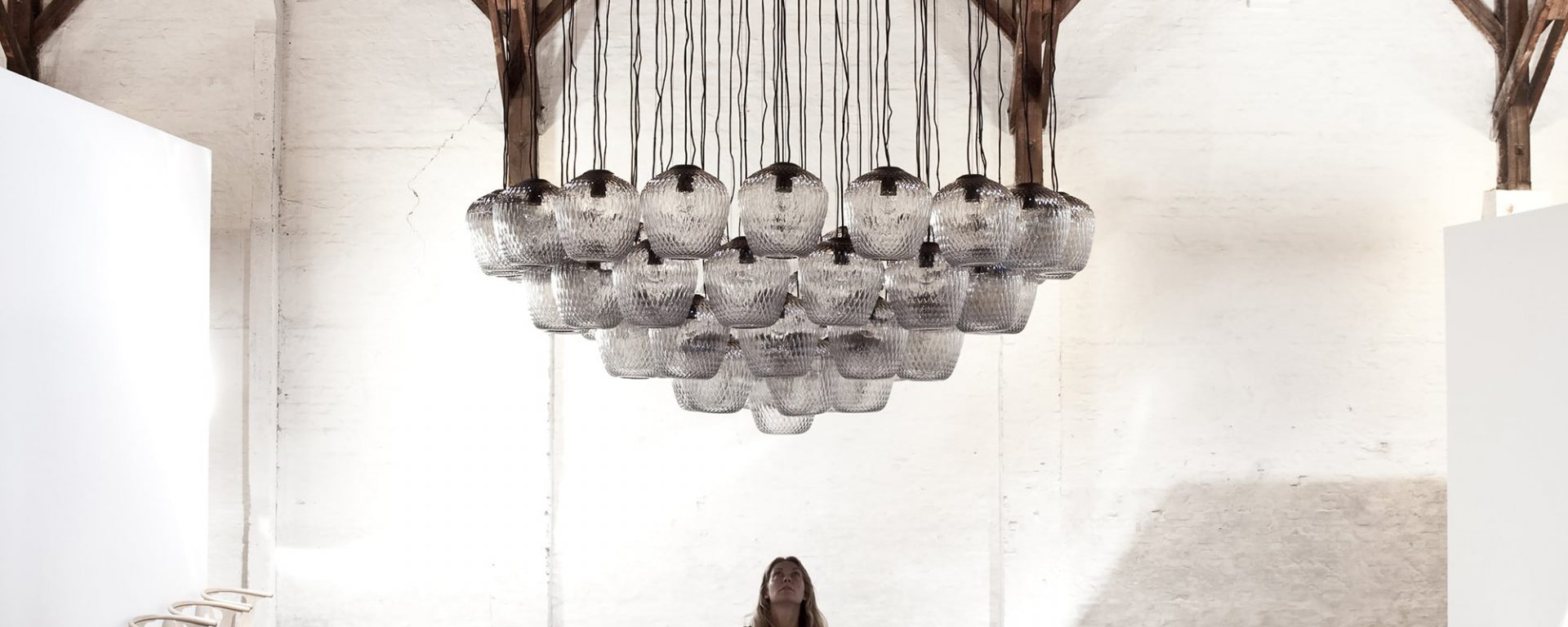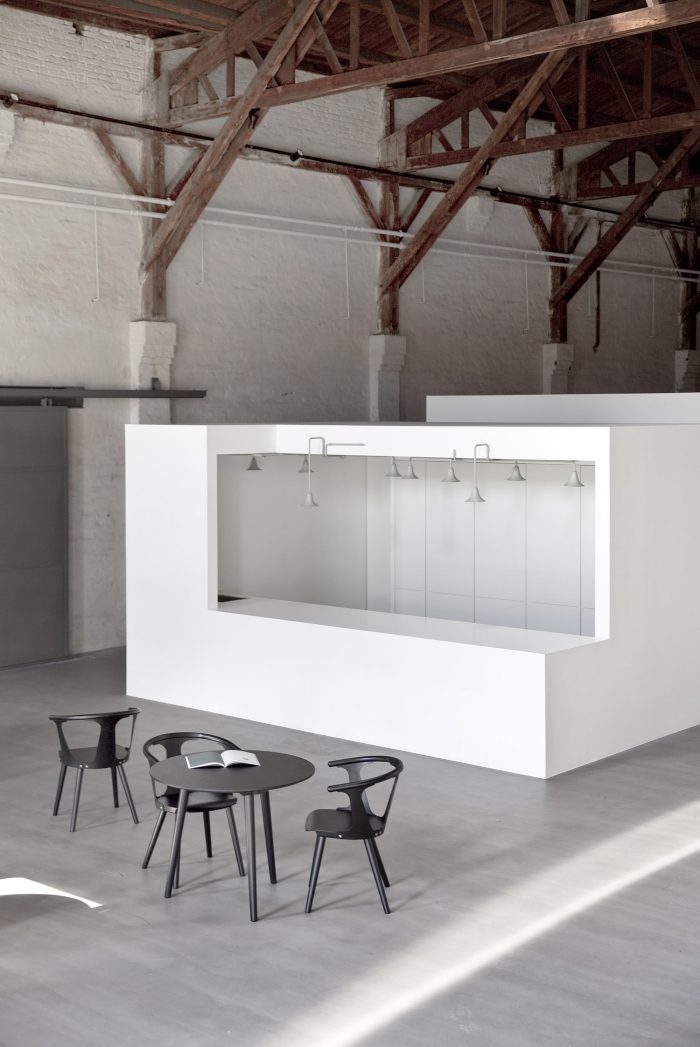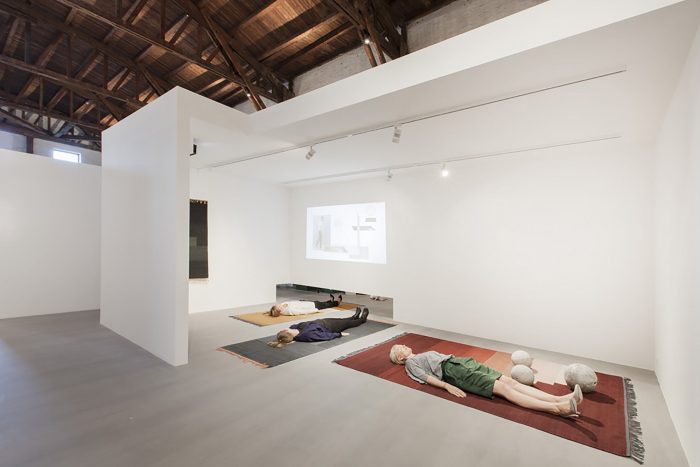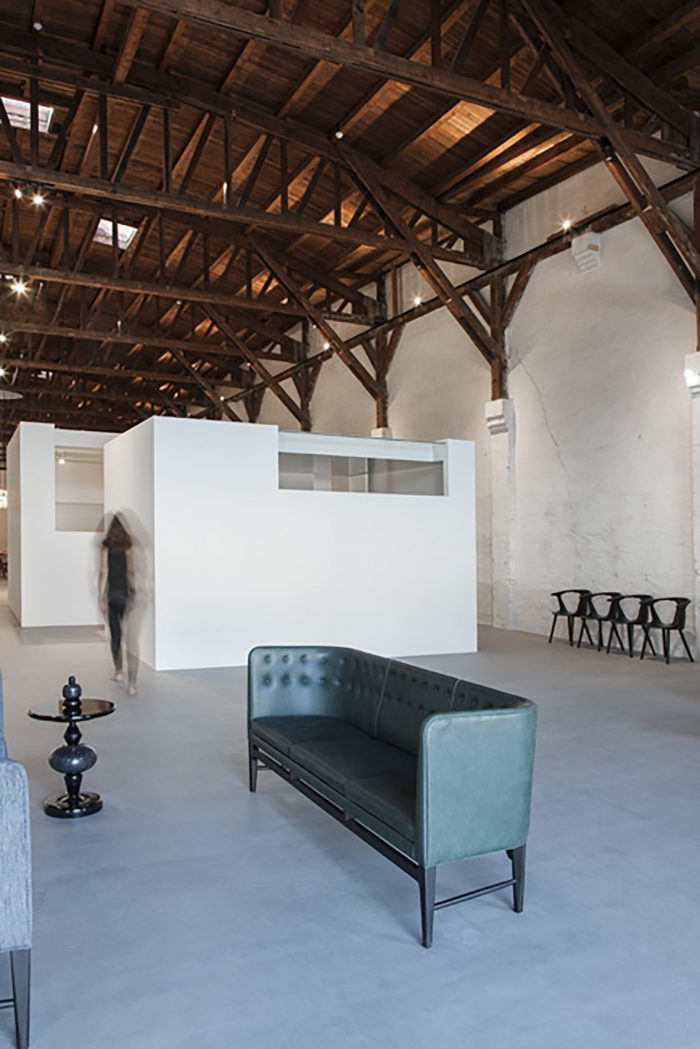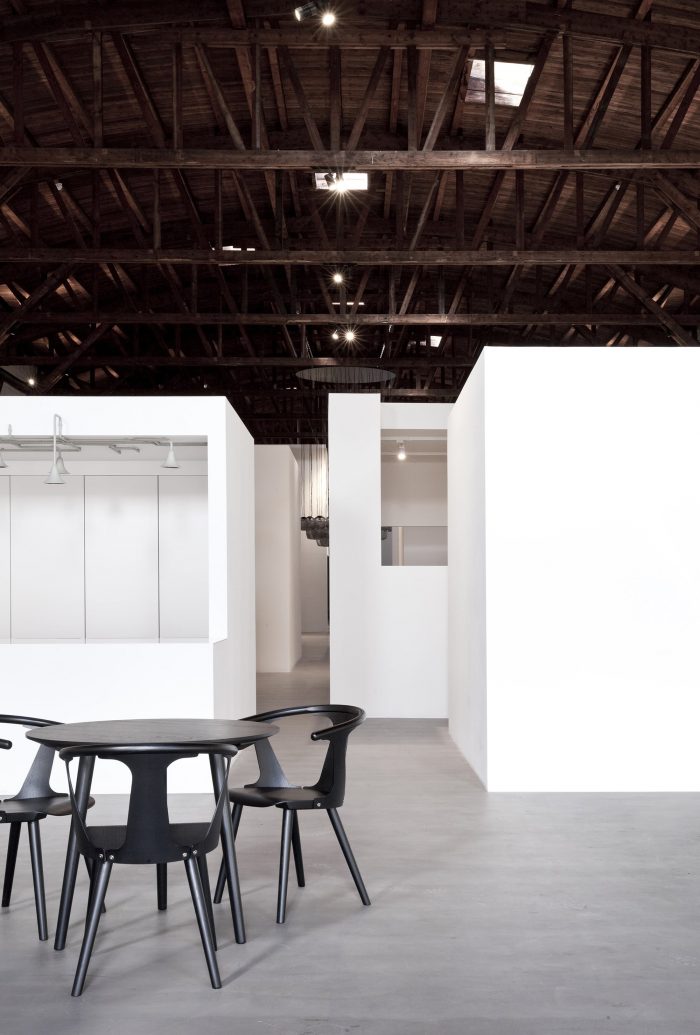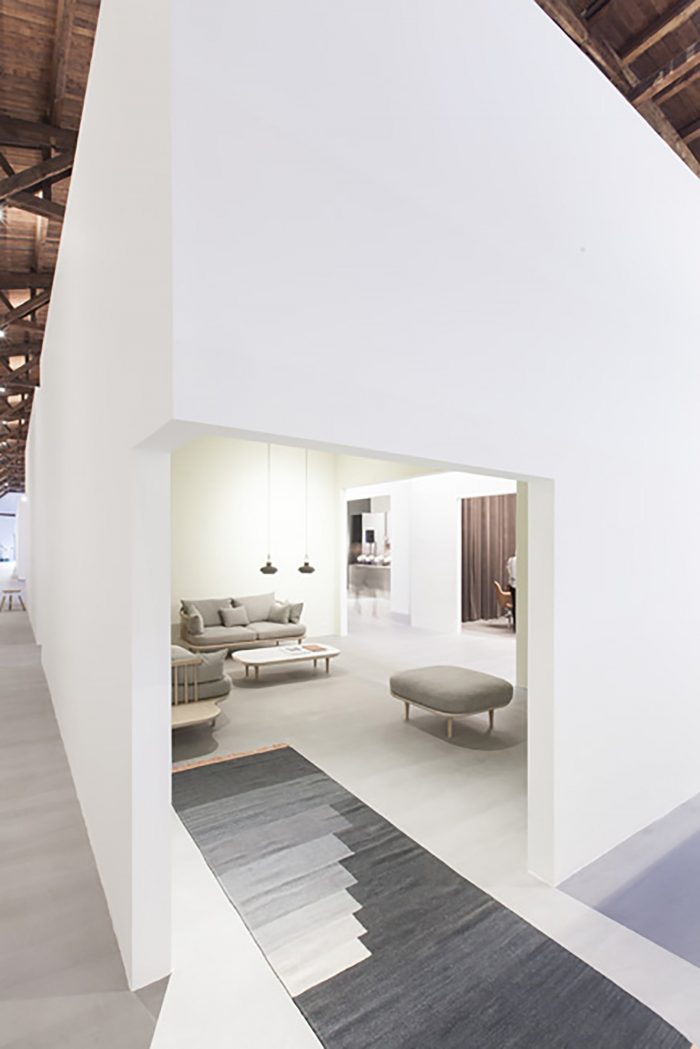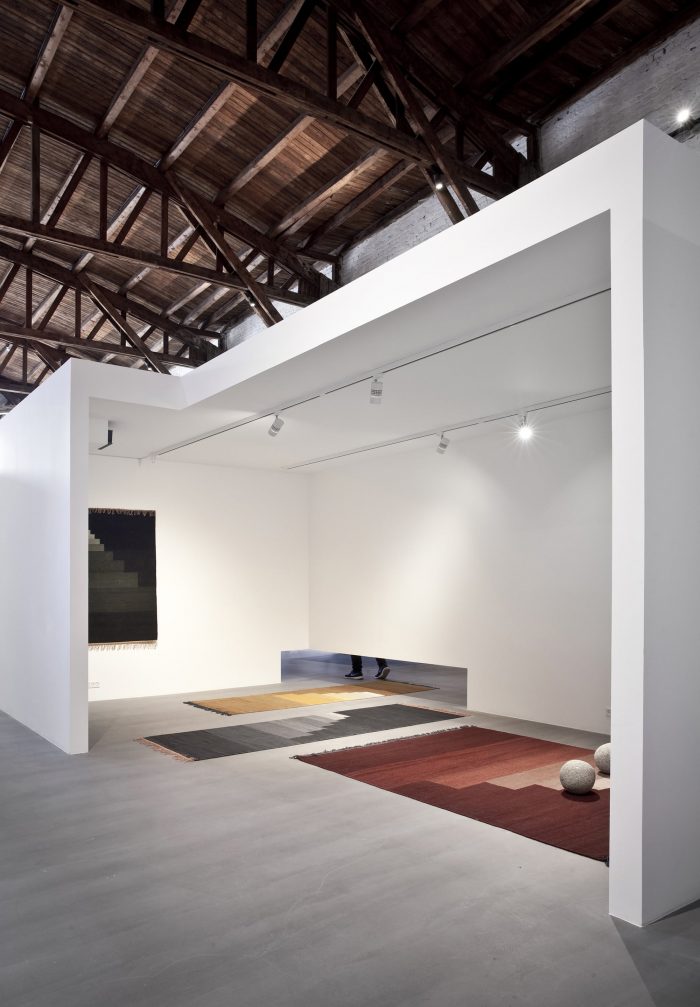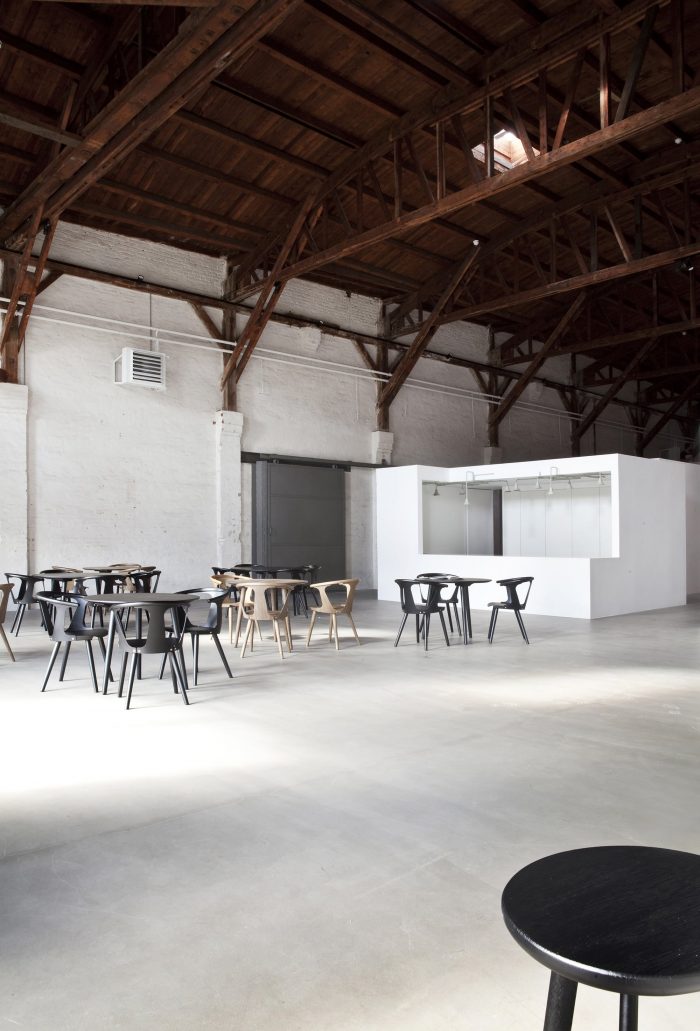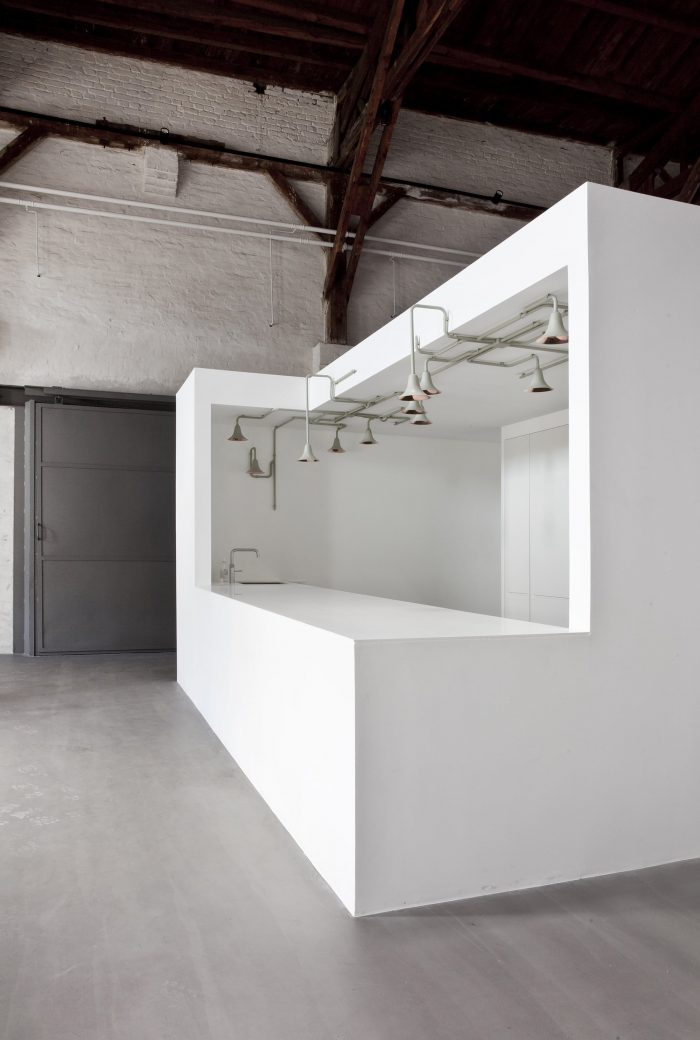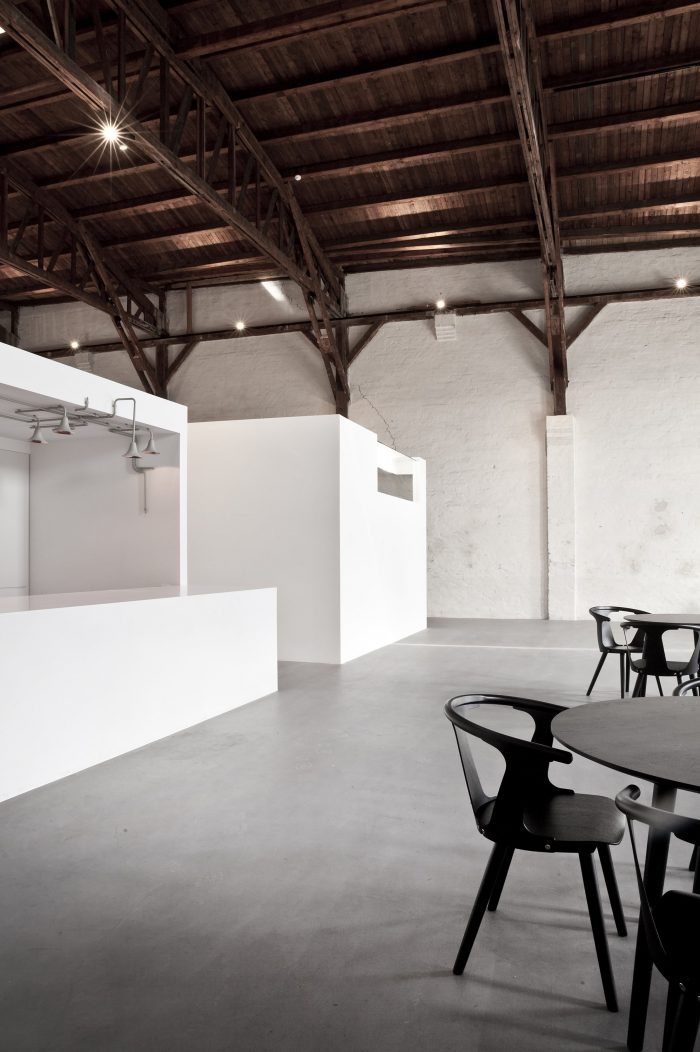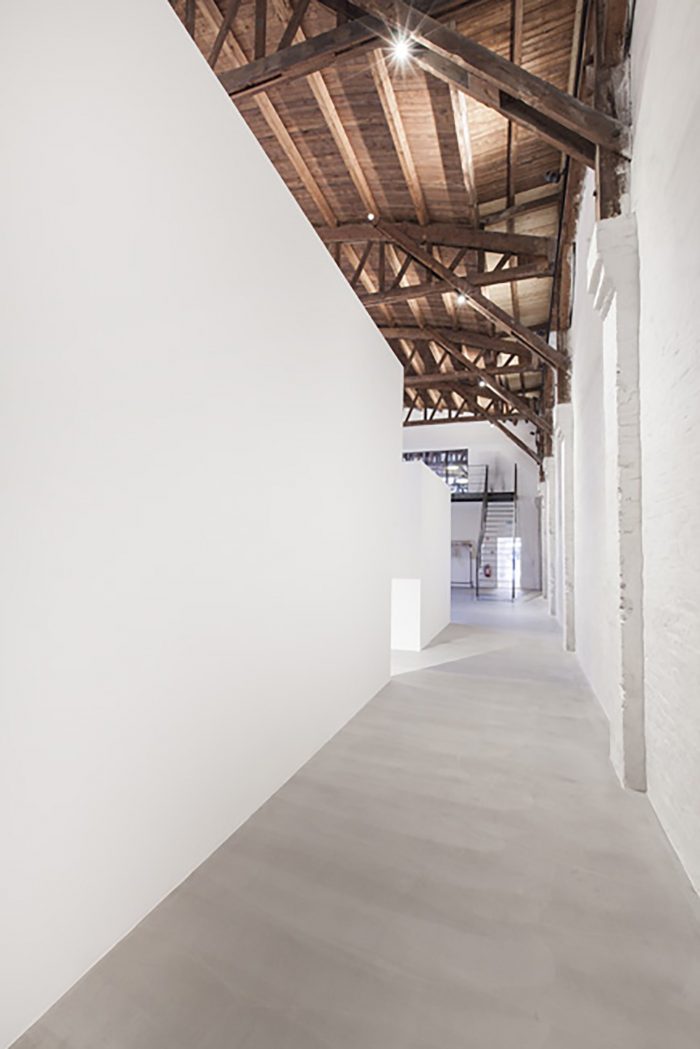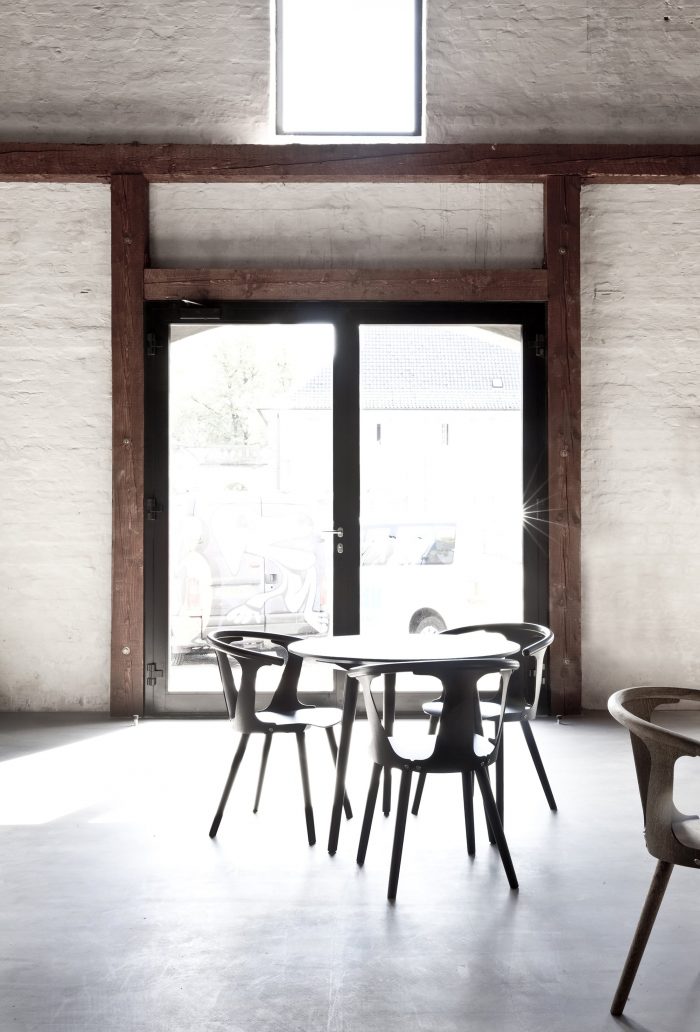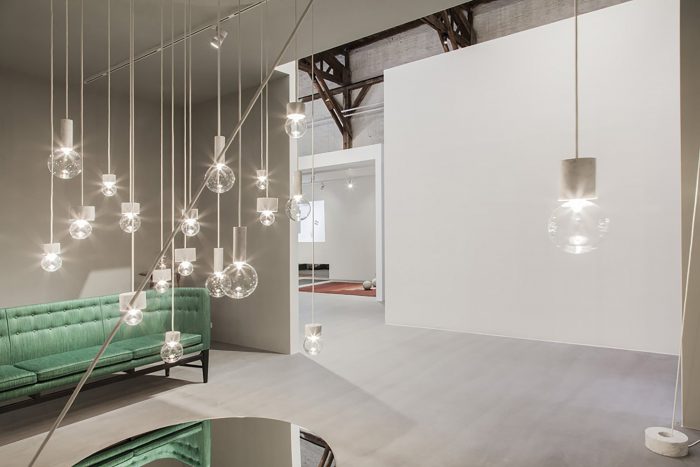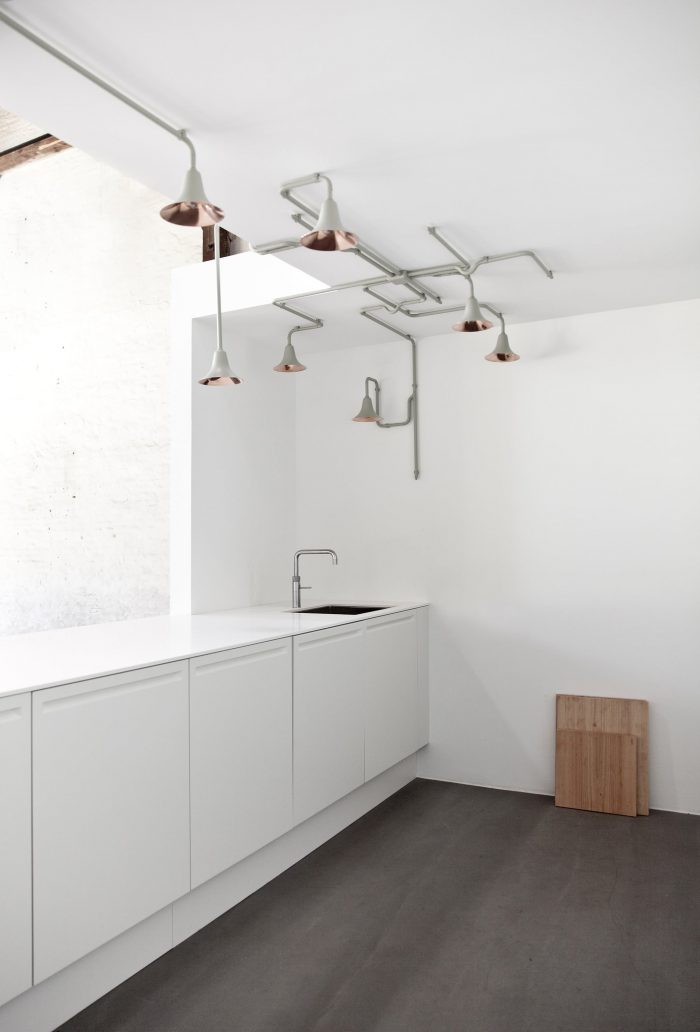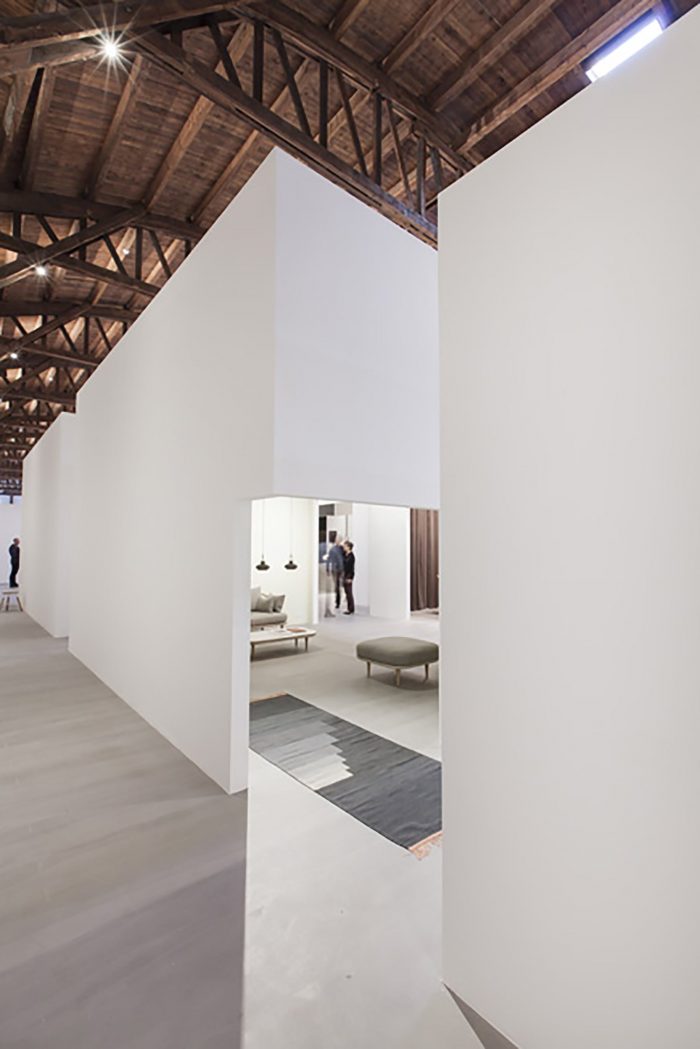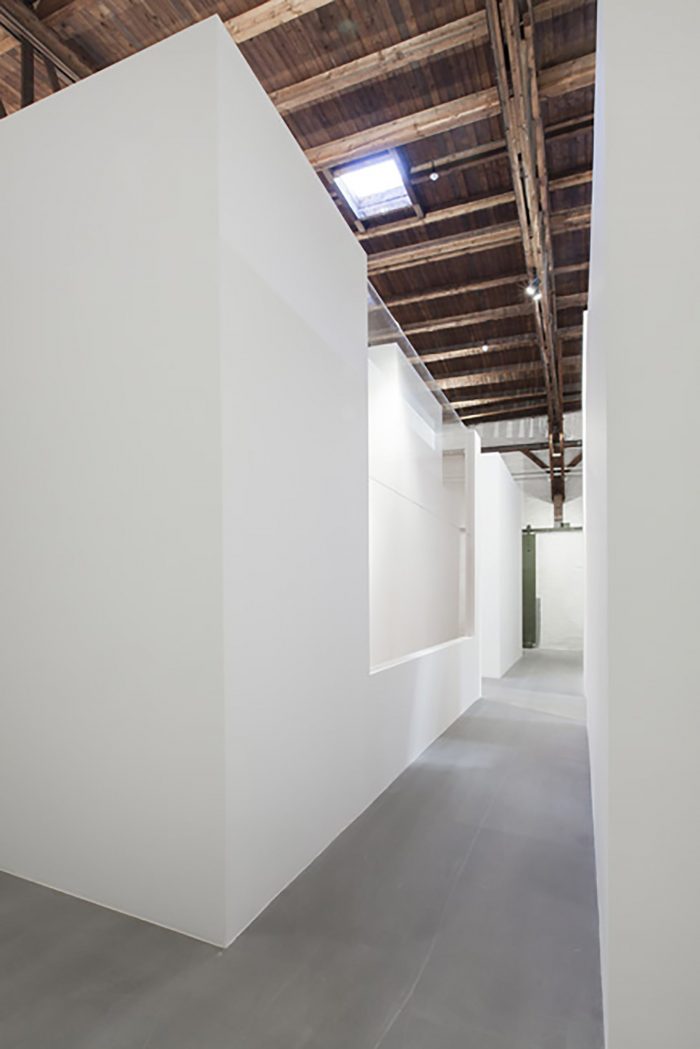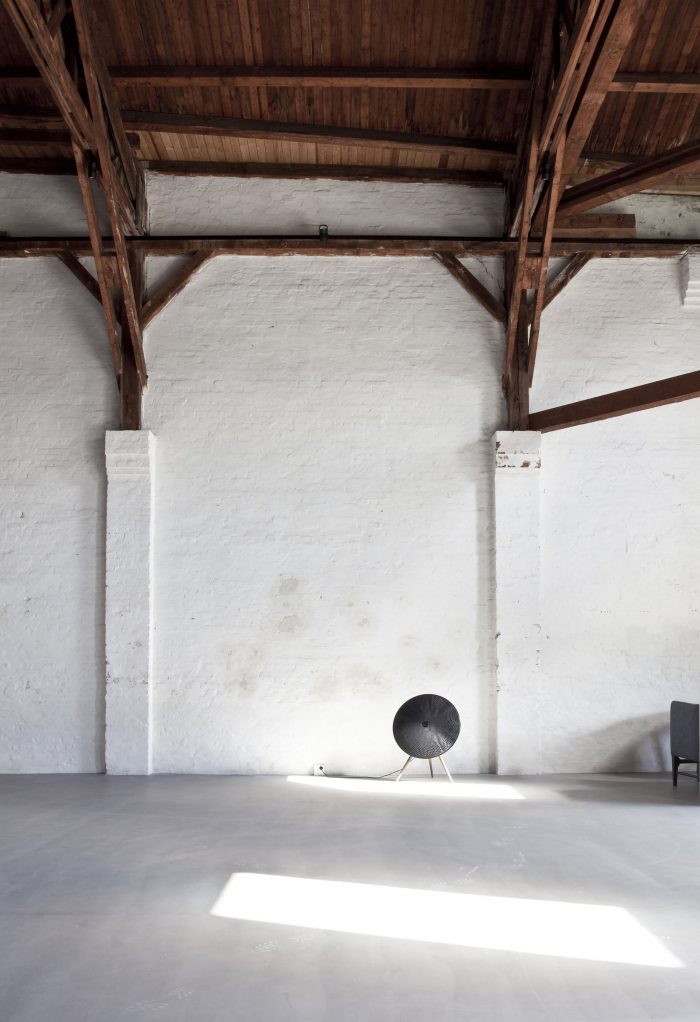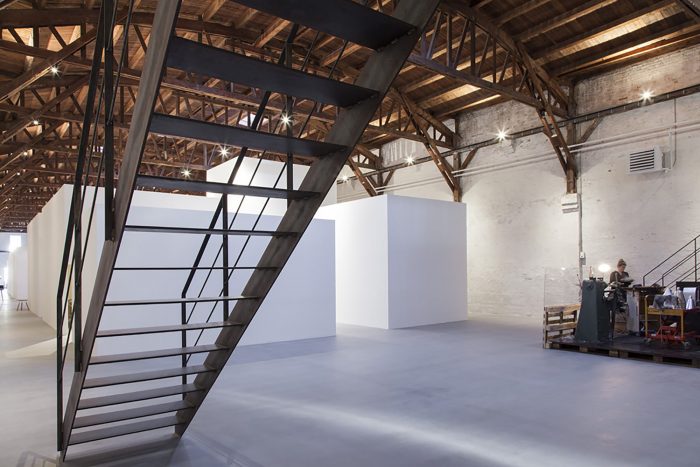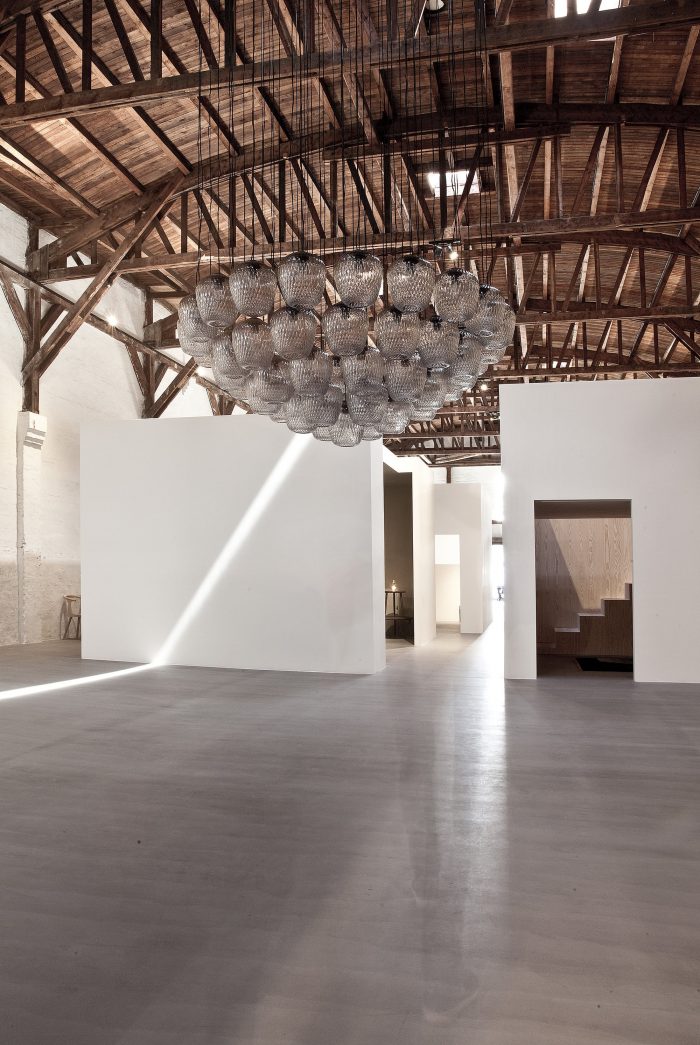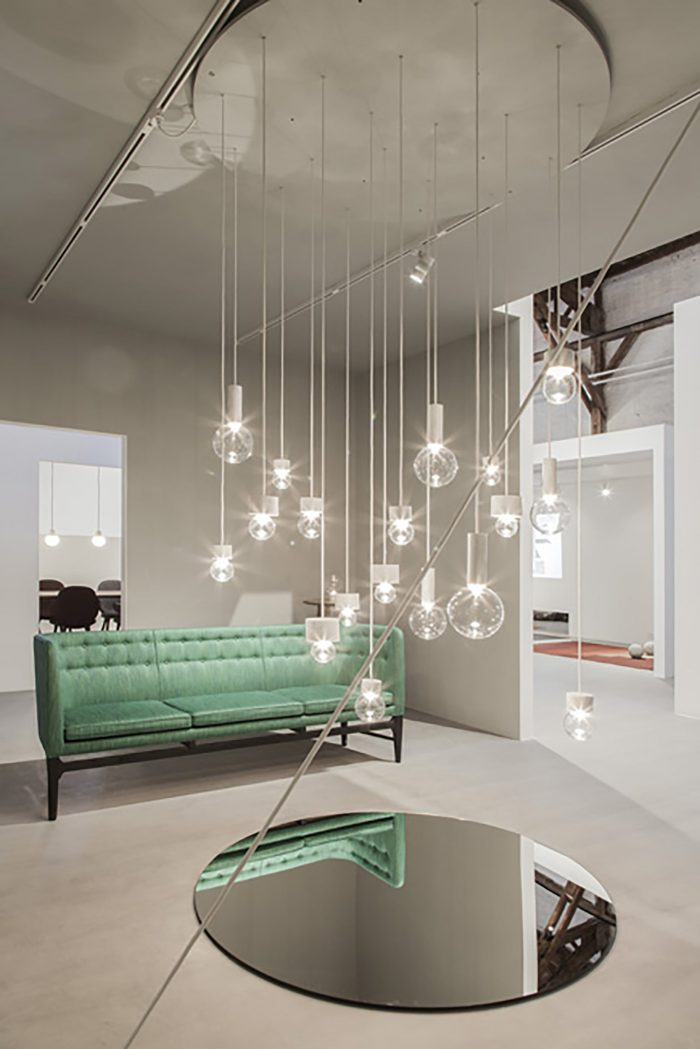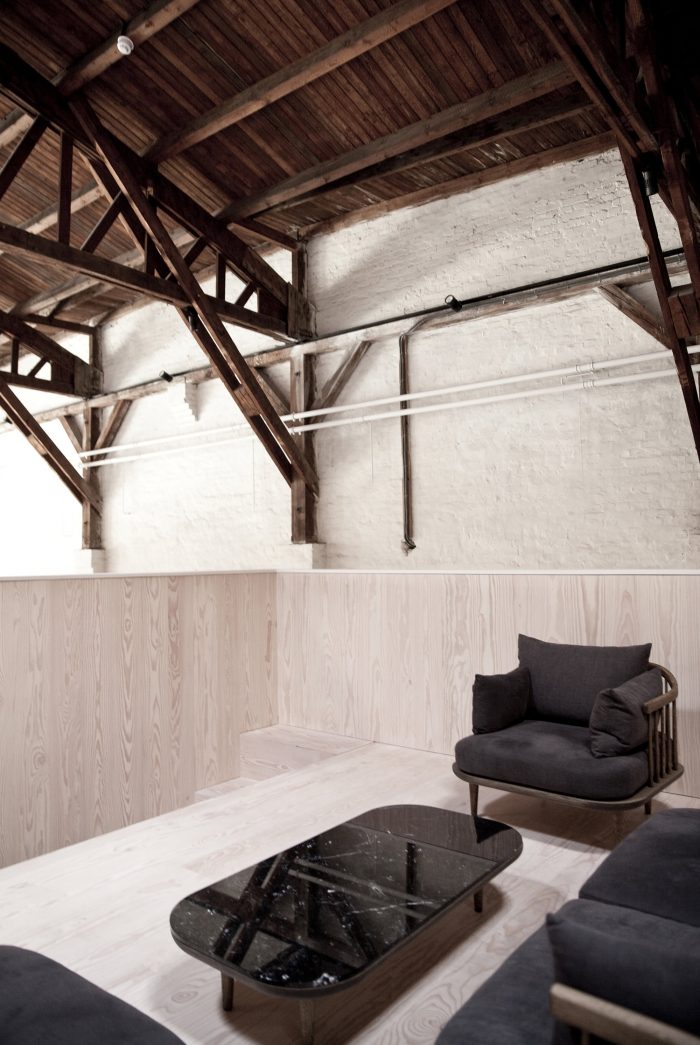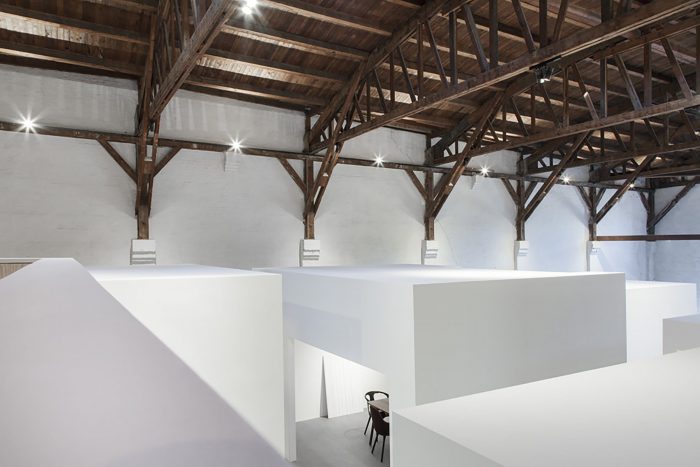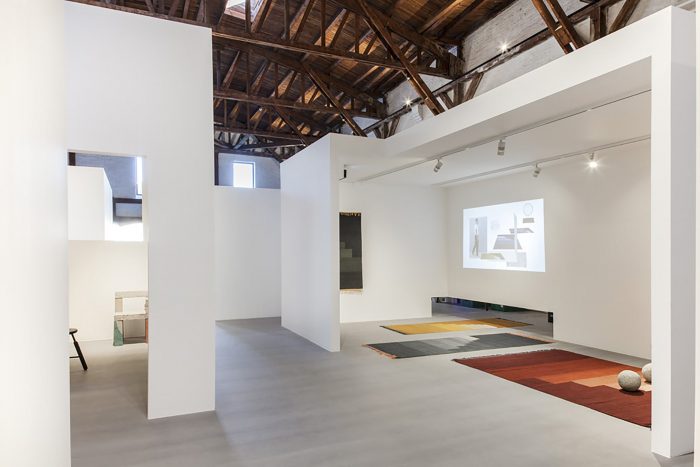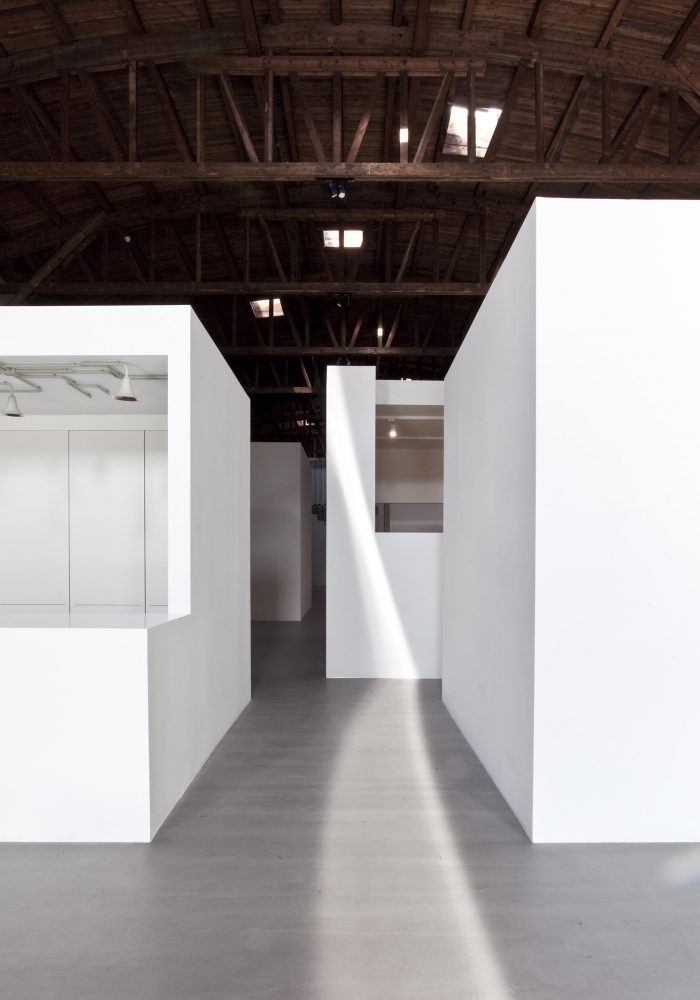哥本哈根的纸岛村将户外活动引入室内,创造了一种戏剧性的感官体验。设计公司&tradition的展厅是一个艺术装置、仓库、小村庄和更大的城市景观之间的混合体。它是由诺姆建筑事务所设计的,由12个极简主义的房子组成,在一个古老的质朴和粗糙的工业仓库内。
The Village on Paper Island in Copenhagen brings the outdoors inside and creates a theatrical and sensory experience. The showroom for the design company &tradition is a hybrid between an art installation, a warehouse, a small village and a larger cityscape. It’s designed by Norm Architects and consists of 12 minimalist houses inside an old rustic and rough industrial warehouse.
“村庄 “是诺姆建筑事务所在过去5年中为&tradition进行的空间识别工作的高潮。在为&tradition做展销会展台、弹出式商店和安装工作时,Norm Architects从一开始就与建筑碎片合作,创造开放的空间规划,使&tradition能够在不同的环境中展示他们的家具和照明作品,在同一空间中创造不同的情绪。
“The Village” is the culmination of Norm Architects work with spatial identity for &tradition over the past 5 years. Doing trade fair stands, pop up shops and installation work for &tradition, Norm Architects has from the beginning been working with architectural fragments to create open space plans that allow &tradition to showcase their furniture and lighting pieces in different environments, creating different moods within the same space.
这一次,&tradition和Norm Architects一路走来,在一个古老、质朴、原始的工业空间内建造了一个小型的极简主义村庄。”这是一个独特的机会,能够在一个空间里展示整个系列,并展示我们的产品如何在不同的环境中共同发挥作用,”&tradition的品牌总监Martin Kornbek Hansen说。
This time &tradition and Norm Architects have gone all the way and constructed a small minimalist village inside an old, rustic and raw industrial space. “This is a unique opportunity to be able to display the entire collection in one space and to show how our products work together in different settings,” says Martin Kornbek Hansen, &tradition’s brand director.
像&tradition的许多企业一样,这个项目正在进入一个意想不到的领域。Norm建筑事务所没有设计成典型的陈列室,而是创造了一个办公室和陈列室,其本身就介于功能性建筑和抽象艺术装置之间。
Like many of &tradition’s ventures this project is moving into a territory of the unexpected. Instead of being designed like an archetypal showroom, Norm Architects has created an office and showroom that is somewhere between functional architecture and an abstract art installation in itself.
它位于一个1600平方米的大仓库里,历史上曾用于储存纸张,这个空间已被剥离到最低限度。暴露在外面的漂亮的木制屋檐被完整地保留下来,并且完全可见,而地板现在是混凝土和树脂,创造了一个光滑的哑光表面。
Housed in a sixteen hundred square meter big warehouse, historically used for the storage of paper, the space has been stripped back to its bare minimum. The beautifully exposed wooden roof gables are kept intact and fully visible while the floor is now concrete and resin, creating a smooth matte surface.
占据仓库中央空间的12间房屋的极简主义执行,受到了你在全球温暖的气候中可以找到的村庄结构的启发–那里的方形房屋建在一起,创造出一种与人类尺度相关的亲密和混乱的魅力。”诺姆建筑事务所的Linda Korndal说:”我们一直在深入研究乡村建筑的典型元素,如城市广场、教堂塔楼、主要街道、小巷、完美的网格和偶然出现的不完美的不规则现象。
The minimalist execution of the twelve houses that take up the central space of the warehouse is inspired by village structures you can find in warmer climates all over the globe – where squared houses are built together, creating an intimate and chaotic charm that relates to the human scale. “We have been working intensely with archetypical elements from village architecture, like the city square, the church tower, the main streets, the alleys, the perfect grid and the imperfect irregularities that occur by chance” says Linda Korndal from Norm Architects.
在一个原始的室内空间中,凭借令人印象深刻的体量,参观者很快就会有一种置身于城市景观中的感觉,通过对知名建筑的少量、微妙和低调的参考,诺姆建筑事务所成功地创造了内部和外部之间的对话,而没有在仓库的建筑外墙上使用传统的透明度。
With the impressive size of the volumes in an raw indoor space the visitor quickly gets the feeling of being in a cityscape and with few, subtle and understated references to well know structures, Norm Architects have succeeded in creating a dialogue between inside and outside without using traditional transparency in the architectural facades of the warehouse.
诺姆建筑事务所的Jonas Bjerre-Poulsen说:”这就像一个建筑类型的字母表”。”它们都属于同一个家族,但具有不同的特征和功能”。这些房屋有共同的建筑语言,但在尺寸和功能上有所不同。有些房子像塔楼,有些有门窗、内部楼梯和屋顶露台,而有些几乎就像抽象的雕塑,没有可识别的建筑细节。有些亭子有固定的用途–其中一个是厨房,有些是会议室或用于存储,但大多数是灵活的空间,可以改变。
“It’s like an alphabet of building types,” says Jonas Bjerre-Poulsen of Norm Architects of the village. “They’re all part of the same family but with different characters and functions.” The houses have a common architectural language, but differ in size and function. Some houses are like towers, others have windows and doors, internal staircases and a rooftop terrace, while some are almost just like abstract sculptures with no recognisable architectural detailing. Some of the pavilions have set uses – one houses a kitchen, some of them are meeting rooms or meant for storage, but the majority are flexible spaces, open to change.
纸岛就在港口的中间,最近从印刷厂的存储设施转变为建筑师、时装设计师等人的创意中心。这是一个变化的地方,这种氛围也被纳入办公室和展厅的设计中。我们的想法是,这些房子将作为一个传统的白色立方体,在其中展示&tradition系列。”我们真正感到兴奋的是,我们计划每六个月邀请艺术家和设计师为这个空间创造一个整体概念,因此它将像我们的产品的画廊一样发挥作用,”Kornbek Hansen说。
Paper Island is right in the middle of the harbour and has recently been transformed from storage facility for the printed press to creative hub for architects, fashion designers and the like. It´s a place of change and this atmosphere is also incorporated into the design of the offices and showroom. The idea is that the houses will serve as a traditional white cubes, in which to display the &tradition collection. “What we’re really excited about is that every six months we are planning to invite artists and designers to create an overall concept for the space, so it will function like a gallery for our products,” says Kornbek Hansen.
“在室内建造房屋,不必应对天气条件,使我们能够创造出极其简约的建筑类型,作为室内装置重复出现,也是对唐纳德-贾德和理查德-塞拉等极简主义艺术家的一些作品的致敬,”乔纳斯-比耶勒-波尔森说。
“Building houses inside, not having to cope with weather conditions, has allowed us to create extremely minimal building types that repeated as an indoor installation and also pays an homage to some of the works by minimalist artists like Donald Judd and Richard Serra,“ says Jonas Bjerre-Poulsen.
Architects: NORM Architects
Area : 1000 m²
Photographs :Jonas Bjerre-Poulsen
City:COPENHAGEN
Country:Denmark

